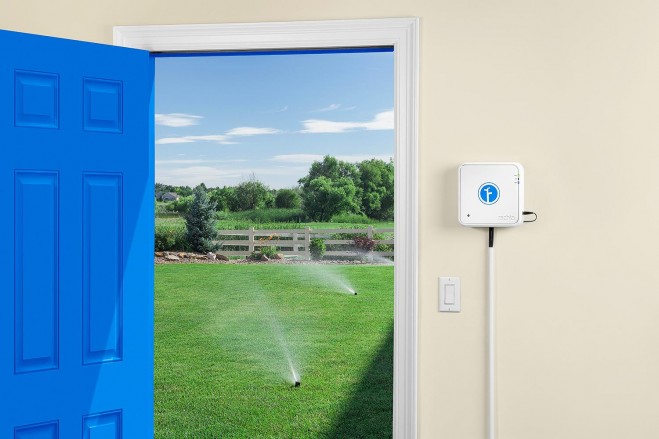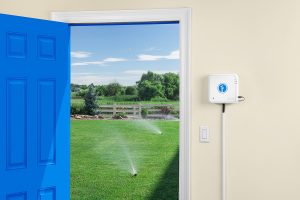

An Australian man watched a wildfire approaching via video surveillance on his smartphone, and saved his farm by turning on the sprinklers with his Rachio smart irrigation app. (Credit: Digital Trends)
Along with the larger forces of climate change, another contributing factor to the fierce wildfires in California has been the dry soil conditions. Light rainfall, combined with heavy use of aquifers by large farms, has created perfect conditions for an inferno.
Stories of homeowners saving their homes by turning on sprinklers remotely are not as common as they should be—but they do happen. Outdoor sprinklers could be part of a simple fireproofing “routine” activated automatically when certain conditions are met.
Not only lawn sprinklers could be triggered, but additional water lines designed to soak down the entire home. This isn’t something that’s normally in place, but perhaps it should be.
John Cook, a structural engineer with Rohnert Park-based MKM & Associates asserts that such exterior sprinkler systems, combined with non-flammable cladding and roofing, could save many homes.
“Each home or commercial building could have its own koi pond or pool,” he told the Sonoma News. “If automated sensors detect heat from oncoming flames, perhaps 250°F, a pump draws water out of the pond and sprays it over the building. Water running down the sides of the structure would collect in concrete troughs that carry water back. A pump could have automated backup—generator or batteries in case of power failure.”
In drought-stricken areas, one alternative to a pool for water storage alternative is a standby reservoir/water tank filled with recycled graywater and/or rainwater.
Excess graywater can be used for landscape irrigation and automatically kept capped off and monitored at a certain level, thanks to remote WiFi gadgets that are now available to track water depth in cisterns.
Of course, simply soaking down a home and its environs is not a failsafe against a powerful blaze. Homes can be built of block or brick, with metal or clay roofs, that are virtually impervious to fire. But windows and doors remain vulnerable. One option, according to Cook, would be to cover them with metal shutter systems. These, of course, could also be automated, and even added to single routine through a system such as Alexa. A single voice or remote command such as “Alexa, lock down for wildfire,” could trigger sprinklers, shut the external blinds and turn on the backup cellular modem.
